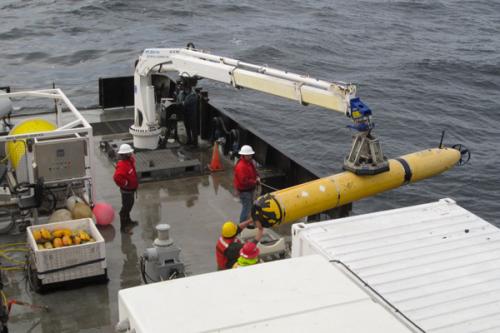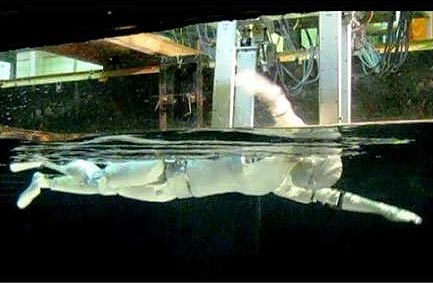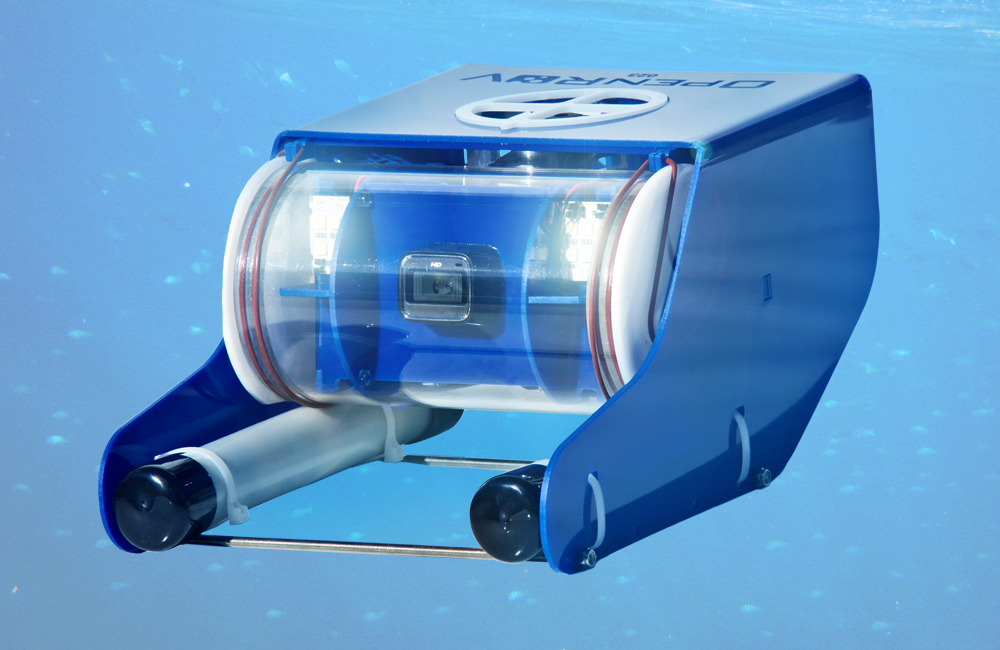
Robohub.org
Swimming robots

Why should flying robots have all the headlines! This year has been full of robots that swim, so here is a small collection, from swarms to explorers, from nanobots to humanoids.
This autonomous underwater vehicle (AUV) being deployed in California is testing a new navigation system which will allow for more autonomous movement over tricky terrain.

Engineers at Stanford and the Monterey Bay Aquarium Research Institute (MBARI) have developed a system that allows autonomous underwater vehicles (AUVs) to better anticipate obstacles in their path, enabling them to safely photograph even treacherous, distant reaches of the ocean floor. via The Stanford Report

Our featured image comes from RobotSwim – a French company which presented at RobotWorld 2012 in Korea. RobotSwim offer small autonomous biomimicry robots designed to function in a swarm. Christophe Tiraby started prototyping fish robots in 2005 as a novel platform for testing collaborative robotics, biological studies and also providing simulation of other AUVs.

Providing a simulation of human swimming is Swumanoid from Tokyo Institute of Technology. Swumanoid can provide measures of water resistance and will facilitate research into human movement in water. Swumanoid may also be able to reliably test swimming costume performance. via PlasticPals.

At the opposite end of the scale, researchers from Georgia Institute of Technology are working on microswimmers. These nanorobots are only a few microns long and are propelled by tiny flaps which are moved by volume changes in hydrogel material. This is still only a model but one day these nanobots could be used in drug delivery, lab on a chip systems, even robot construction swarms. via ScienceDaily

And there’s a range of AUVs from Liquid Robotics, including the Wave Gliders and Sharcs. The four PacX Challenge Wave Gliders have broken the distance record for autonomous underwater vehicles as they cross the Pacific. Papa Mau arrived in Australia on November 19th, with Benjamin detouring to Samoa and two others en route to Japan. The Wave Gliders provide meteorological and oceanographic information and have proven reliable sources of real time data even through severe Category 1 hurricanes like Sandy.
“In the midst of this epic disaster, Liquid Robotics wishes to express our sympathies for those impacted by Hurricane Sandy,” said Bill Vass, CEO of Liquid Robotics. “We are working closely with scientists around the world to use the Wave Glider technology for better hurricane, typhoon and tsunami prediction so we can help reduce the risk to human life and property.

And then there’s the remotely operated vehicle (ROV) community, from OpenROV to the competitions like RoboSub and the educational ROVs like SeaPerch.
OpenROV is a Do It Yourself telerobotics community centered around underwater exploration and education. We have developed a low-cost telerobotic submarine that can be built with mostly off-the-shelf parts. The goal of OpenROV is to democratize exploration by allowing anyone to explore and study underwater environments. The OpenROV community is also laying the foundation for globally-connected citizen scientists to share their data and findings.
tags: liquid robotics, OpenROV, Swarming, wave glider




